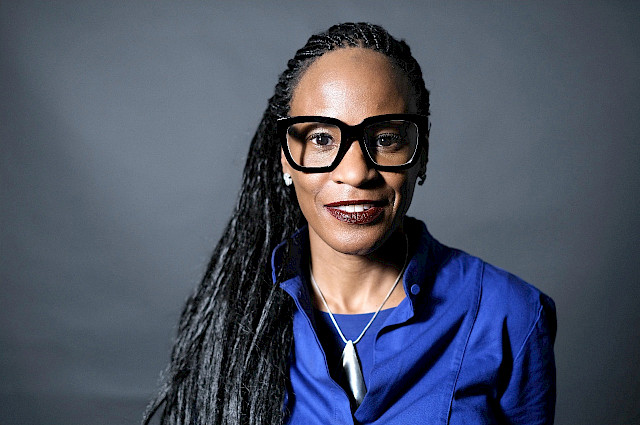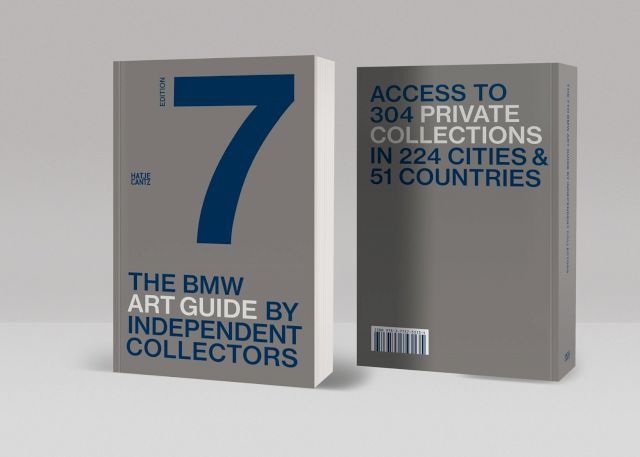BMW Art Guide by Independent Collectors
Wilhelmina Jewell Strong - Sparks
Founder of BiTHOUSE Projects - BAAR Art Journey

Tell us a little bit about your background.
I have always positioned myself at the intersection of science, technology, and art. Professionally, I am a molecular biologist turned global innovation / transformation executive, investor, and cultural strategist. I have an MBA in Strategic Planning, Global Markets, and Corporate Communications and have studied at Christie’s (Art Business Masterclass Certificate).
Throughout my career, I have had the honor of serving on various boards (Symphonix, Encore, DeYoung, International Academy of Digital Arts and Sciences, Real Time Academy, Hollywood Music and Media Awards, SXSW Diversity Initiative, USF Alumni Association, WHU- Masters in Entrepreneurship, Investment Advisory Council for the US Dept of Commerce) for public/private arts, media, education, and community redevelopment initiatives focused on maintaining culture and uplifting communities and I truly consider myself a global citizen. I moved to Germany in 2013 from the San Francisco Bay Area and have been connecting the dots between Europe and the US for almost 15 years now. Ever since my country of residence has become Germany, I have had the honor of mentoring and/or advising Invest in Bavaria, TechFounders, Select USA Startup Pitch Competition, Berlin Senate, BSH Accelerator, Siemens Design Award, Axel Springer Accelerator, Roche Accelerator, Deutsche Telekom Accelerator, European Institute of Technology, and other institutional startup and innovation initiatives throughout Europe, and served as the Global Head of Innovation, Scouting and Inclusion for METRO AG (Media Markt, Saturn, METRO, Makro) in Dusseldorf from 2015-2017 prior to their demerger, while continuing to be a patron of the arts.
How did you start your career in the art world?
I studied art foundation, sculpture and painting simultaneously in pursuit of my molecular biology degree during my undergraduate studies. My family has a collection of works by artists found in the MoMA, MET, Smithsonian, and Whitney collections (José Clemente Orozco, Kenneth M. Adams, and various French and German artists). I was always encouraged to engage in activities that exercised both my left and right side of the brain. While living and working in Japan, I would paint almost daily after returning home from the lab. Upon moving to San Francisco in the early 2000’s I served on the board of the first museum supporting artworks from the African Diaspora, as well as on the young professionals board of the DeYoung. Upon the redevelopment of the Jazz District in San Francisco, I served as the VP of Strategic Development for The Jazz Heritage Center (JHC) which was an art gallery, as well as a cultural and educational complex dedicated to the long history of Jazz in San Francisco and the Fillmore District.
During the pandemic, I realized that there was an opportunity for emerging artists to become more visible to mainstream collectors independent of traditional art channels. I started a creators equity and generational wealth “art book building” program (BiTHOUSE Projects - BAAR Art Journey) for visual artists to build awareness of their practice and their works, while helping mainstream collectors diversify their collections and support the careers of living artists. This initiative has merged my passion for the arts with my expertise in building new business models for traditional industries. We currently have 28+ living artists in the program spanning across Africa, Asia, Europe, and the Americas. We have partnered with Artnet to showcase works from our contemporary artists portfolio composed of artists we have scouted from across the globe.
What’s your view on separating artworks from the artist?
This is currently a very hot topic, given what is happening in various parts of the globe where the wellbeing of citizens is being compromised in the Ukraine, Israel and other countries. Artworks by artists who create works which are controversial in nature are being excluded from exhibitions and/or not receiving funding. Both art and educational institutions are being pressured by communities to dismiss their leaders who address antisemitism topics incorrectly and/or support countries in which there is political unrest. All of these incidents have caused funding institutions, curators, and collectors to pause and think about their distribution and allocation of resources.
I think that it is difficult to separate an artist and their viewpoint from their artworks. If you google, “What is art?“ the definition is, “the expression or application of human creative skill and imagination, typically in a visual form such as painting or sculpture, producing works to be appreciated primarily for their beauty or emotional power.”
When I collect art, when I recommend works of art to others to collect, it is because I like who the artist is as a being, what they represent, and I want to support their craft. When we purchase art from galleries and/or other collectors, we typically do this because we trust the institution, we trust the seller, and nine times out of ten our values are aligned.
In what way will digitization enrich collecting (digital and physical) art?
I love this topic... Digitization IS MY THING! It’s innovative, it’s disruptive and it challenges the status quo. The utilization of technology in the arts has enabled collectors to align with galleries and institutions across the globe. One can live in Germany, and purchase a work in Hong Kong, without even traveling there, for example. Digitization has enabled collectors to make choices on a global level versus just on a local level. By streamlining the buying process, collecting digitally provides transparency. Collectors can connect with the artists and vice versa. When it comes to purchasing digital art, I am a bit old fashioned, and I like to see and hold what I pay for. Digital art has its place, and as it relates to the younger generation, there is most definitely a market. I am a real fan of all things innovative and inclusive. Digitization has made collecting art more inclusive.
What is your biggest hope for the Art World?
My biggest hope for the art world is that gallerists realize the importance of sharing the who, what, and the why of the artists they represent. I also am fed up with labels such as marginalized, etc. Art fairs should find a way to increase their diversity and inclusion activities, and art collecting should be encouraged across all socioeconomic levels. Art is like music and food, it can bring people from all walks of life together. In summary, my biggest hope is that the art industry becomes more inclusive for both artists and collectors. The current narratives are simply outdated!
Which exhibition or collection is on your “must-see” list?
This is a tough question. There are a few exhibitions that are on my “must-see” list for those who claim to be “lovers of art.”
Giants - Art from the Dean Collection of Swizz Beatz and Alicia Keys at the Brooklyn Museum. Within this collection one can see works by artist such as: Gordon Parks, Lorna Simpson, Nina Chanel Abney, Ebony G. Patterson and more. This collection represents the philosophy of “artists supporting artists,” according to the commentary. The collection on view highlights works by Black Diaspora artists and represents the couples’ efforts to expand the historical narrative of art.
The Beauty of Diversity at the Albertina Modern in Vienna. This particular exhibition highlights the museum’s contemporary collection and demonstrates the importance of exhibiting works by women, people of color, and LGBTQIA artists. These works contrast the typical gravitation towards Old Masters. Works by artists such as Cecily Brown, Amoako Boafo, Alexandre Diope, Jade Fadojutimi, Sungi Mlengeya, Marc Quinn, Kennedy Yanko, Jannis Varelas and others can be seen during this exhibition until August 18, 2024.
Mark Rothko at Fondation Louis Vuitton until April 2, 2024. What I like about this retrospective is that it features approximately 115 works from various institutional collections, private collections and even the artist’s family collection. The works in the exhibition span across the artist’s career and is inclusive of both figurative and abstract works.
Josephine Baker Icon in Motion at the Neue Nationalgalerie in Berlin. The exhibition celebrates the artist and highlights her role as not just an artist, but as a civil rights activist and cultural figure. This exhibition focuses on Josephine’s role as a cinematic pioneer but also utilizes the inclusive lens of other artists to visualize and express the inspiration that Josephine Baker sparked amongst others across the globe. Artist Kandis Williams was a co-curator alongside Klaus Biesenbach, Dr. Terri Francis, and Dr. Mona Horncastle.
The Harlem Renaissance and Transatlantic Modernism at the Metropolitan Museum of Art. This exhibition is comprised of over 160 works of art spanning across various curriculums. It explores how Black artists portrayed daily life in cities that took shape from the 1920s-1940s. This exhibition compares the Harlem Renaissance with new developments of modern Black subjects as central to the development of international modern art, according to the Metropolitan Museum of Art. Works are shown in juxtaposition with portrayals of African diasporan subjects by Europeans such as: Matisse, Munch, Picasso, and others. Features artists portraying the Black Renaissance include Charles Alston, meta–Warrick Fuller, Augusta Savage, Laura Wheeler Waring, and others. Works for this exhibition come predominately from the art collections of HBCUs (Historically Black Colleges and Universities), Smithsonian American Art Museum, National Portrait Gallery, private collections, and European lenders.
